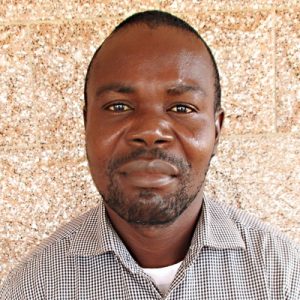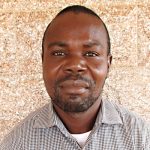The Mummy Ann Pre-school was started by the current proprietress, Mrs. Francess N’senesie in 2002. According to her, this community had no pre-school and some of the parents were taking their kids to the army barracks pre-school. Those kids whose parents could not afford it were just left at home. So, Mrs. N’senesie realized her idea of creating a pre-school here.
The school moved to its current location in 2004 with the support of a local church leader. Classrooms were constructed for the students, but there was no water source. Some 15 years later and there is still no water source at the school.
The current water sources for pupils in this school are packaged water and the swamp. But the swamp source is most frequently used because the administration cannot afford to pay for the packaged water throughout the year.
One can hardly be impressed with a source like the swamp because of its exposure to contamination from various pollutants.
"Life here for us and the kids is prone to the constant risk of waterborne diseases. I stay in constant fear for my staff and the kids," said Mrs. N’senesie.
Aside from its long distance, the road is also very hilly. The distance and the condition of the roads makes it practically impossible for pupils in this school to fetch water here in the first place. So, the administration relies on the school support staff and local youth to help them with water most of the time.
Accessibility to the swamp is further limited by overcrowding. During the dry season, many people flock to this water source because it is the only reliable source in this community. More people means a longer waiting time to get the water. It also means more sources of contamination, since people stand directly in the swamp and some even bathe in the water.
These challenges lead to water shortages at the school. As a result, other areas suffer. For example, it is difficult to maintain cleanliness in the bathrooms without water for cleaning. Handwashing is rare when there is no water available to use after going to the bathroom. These issues further contribute to making the health of the students worse.
"We have tried to maintain an average level hygiene and sanitation here, but our flaws can be attributed to our water shortage situation. When you enter our latrines you will see that the rooms are clean. But when the kids use the facility and there is no water to clean it up..." said teacher Neneh Conteh.
"There the problem starts."
Here’s what we’re going to do about it:
New Borehole
The community will be meeting together to determine the best location for their new well, and then we’ll confirm the viability of their choice. Wherever the drill site, we know clean water will be extremely close to everyone in such a small village!
Our team will drive over the LS200 mud rotary drill rig and set up camp for a couple of nights. Once the well is drilled to a sufficient water column, it will be cased, developed, and then tested. If these tests are positive, our mechanics will install a new India Mark II pump.
This community has been drinking dirty water from the swamp and is suffering the consequences. By drilling this borehole, the area around Mummy Ann's Pre-Primary School will be provided with plenty of safe, clean drinking water of their own.
Training
There will be hygiene and sanitation training sessions offered for three days in a row.
The hygiene and sanitation trainer decided it would be best to teach students and community members about the importance of building a latrine, how to build a handwashing station, and more. They will also teach about other tools like dish racks and the importance of properly penning in animals. Pictures will be used to teach the community how to discern between healthy and unhealthy hygiene and sanitation practices.
These trainings will also result in a water user committee that manages and maintains the new well. They will enforce proper behavior and report to us whenever they need our help solving a serious problem, like a pump breakdown.

 Borehole Well and Hand Pump
Borehole Well and Hand Pump
 Rehabilitation Project
Rehabilitation Project




























